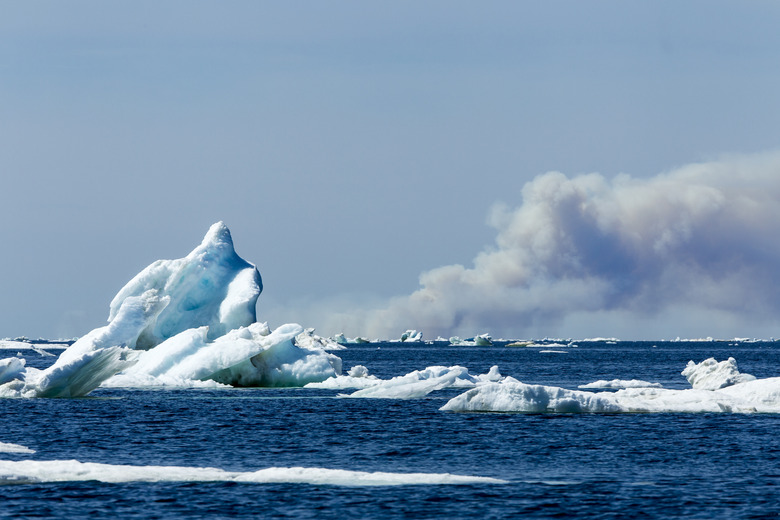The Arctic Is On Fire, And It's About As Bad As It Sounds
The Arctic is on fire.
Not on fire as in "warmer than usual." (Although it is warmer than usual.) Nope, it's literally on fire. And while some wildfires aren't uncommon for July and August, an unusually warm and dry stretch of weather this year has sent parts of Greenland, Siberia and Alaska into flames as early as June.
Scientists are monitoring the area via satellites, and the photos from above are pretty alarming. Images show giant swaths of green land covered by smoky clouds or plumes of flames. Researchers are keeping their eyes on these images, but it's unclear how long these blazes will last or how much land they'll wind up covering before colder weather comes again.
Bigger Problems
Bigger Problems
Many of these wildfires are blazing in areas without human inhabitants, but the fires can still be devastating to plant and animal habitats. Plus, depending on weather patterns, smoke and other pollutants could travel as many as thousands of miles away from the original fire, causing respiratory issues in humans and animals and damage air quality.
But scientists are worried for a bigger reason, too: Fires of this size and scope release dangerous amounts of carbon dioxide into the surrounding air. One monitoring service, the Copernicus Atmosphere Monitoring Service (CAMS) has called these fires "unprecedented," saying that in June alone, the fires emitted 50 megatons of carbon dioxide.
Not only is that more than what had been released during the Junes of 2010 to 2018 combined, it's also approximately the amount that the whole country of Sweden gives off in an entire year.
More Heat, More Problems
More Heat, More Problems
It's one of those vicious cycles that climate change facilitates: Toxic emissions like carbon dioxide are contributing to a warming planet. For example, Alaska just saw a record-smashing heat wave, where temperatures in some parts of the northern state were 30 degrees above average. The airport in Anchorage hit 90 degrees for the first time ever.
With higher temperatures come wildfires earlier in the year. But those fires give off toxic amounts of carbon dioxide, which only speeds up the rate at which our climate changes.
Sick of the cycle? Put pressure on corporations and your representatives to act now and put measures in place that will help slow climate change and keep the Arctic from burning.
Cite This Article
MLA
Dragani, Rachelle. "The Arctic Is On Fire, And It's About As Bad As It Sounds" sciencing.com, https://www.sciencing.com/the-arctic-is-on-fire-and-its-about-as-bad-as-it-sounds-13720300/. 24 July 2019.
APA
Dragani, Rachelle. (2019, July 24). The Arctic Is On Fire, And It's About As Bad As It Sounds. sciencing.com. Retrieved from https://www.sciencing.com/the-arctic-is-on-fire-and-its-about-as-bad-as-it-sounds-13720300/
Chicago
Dragani, Rachelle. The Arctic Is On Fire, And It's About As Bad As It Sounds last modified March 24, 2022. https://www.sciencing.com/the-arctic-is-on-fire-and-its-about-as-bad-as-it-sounds-13720300/
